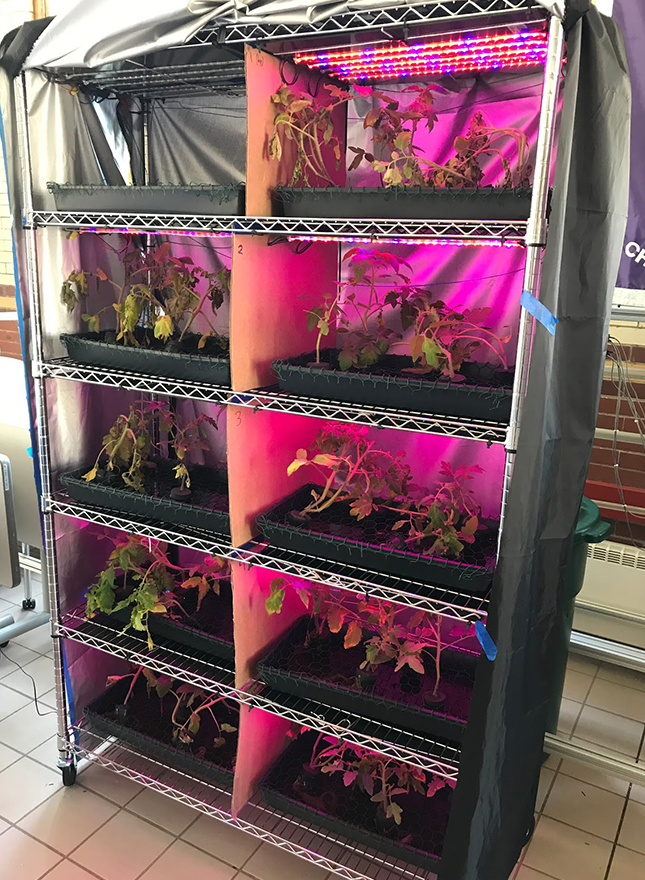EWB can grow fresh food in your home
In many places in the world, fresh fruits and vegetables are hard to come by—and not just in the places you’d think.
In many places in the world, fresh fruits and vegetables are hard to come by—and not just in the places you’d think. Often, certain areas within cities, called nutritional islands, have the lowest levels of access to these foods. Residents of these areas often have to resort to feeding their families with pre-packaged foods bought from the store. Not only are these foods expensive, but their lack of nutritional value is one of the primary causes of poor health outcomes for this population.
Led by Engineering and Public Policy (EPP)/Chemical Engineering (ChemE) undergraduate student Jack Ronayne, a group of Carnegie Mellon students is trying to solve this problem with a brand-new approach to indoor agriculture—and it all starts with LED lights. The project is one of many undertaken by the CMU chapter of Engineers Without Borders (EWB). The student group travels all over the world, identifying problems that communities experience and engineering solutions to enrich their lives. But for those who can’t travel, the club works on a number of projects designed to solve more universal problems.
We asked ourselves: could you simply grow fresh fruits and vegetables in your house?
Kelvin Gregory, Professor, Civil and Environmental Engineering & Engineering and Public Policy, Carnegie Mellon University
“Something we identified was this idea of nutritional islands in urban communities: places with limited access to fresh food either by distance, freshness, or cost. We asked ourselves: could you simply grow fresh fruits and vegetables in your house?” says Kelvin Gregory, a professor in civil and environmental engineering and faculty advisor for EWB. “Obviously the footprint needs to be small, so you have to go vertical. And you’ll need to use artificial lighting. These are the problems we decided to solve for.”
The idea of vertical agriculture is nothing new. Where the team’s approach is novel, however, is in the type of light used to grow the food—and not only that, but the way the light is used. For their first trial, the team used tomato plants as a representational, nutritional food. They wanted to find out the optimal amount of light for a plant to grow, while using the least amount of energy possible.

Source: Kelvin Gregory
Tomato plants grow leaves under rapidly blinking, LED lights.
“What we wanted to study was energy efficiency,” Gregory says. “LEDs are already more energy-efficient than old-school halogen bulbs, but they also have the added benefit of being able to be turned on and off very quickly. So by rapidly flickering these lights at different speeds, we have been able to measure how much light is necessary to grow the biggest plant, using the least amount of energy.”
Using this system, which looks like nothing more than a standard-sized bookshelf covered in a black tarp, a family could grow up to 40 tomato plants. For smaller plants, like lettuce, the system can fit at least 100. And this is only the household design. For larger, more community-focused models, the growth potential is exponentially greater.
“The students will take it from here,” Gregory says. “In a few years, we see this being implemented in different spaces around the Pittsburgh area. It’ll be about finding resources, going out to local foundations, and setting up something that both serves the community and still allows for a research component.”
With the help of this research, Gregory, along with the entire Carnegie Mellon chapter of Engineers Without Borders, hopes to put access to fresh, healthy foods into the hands of everyone around the globe, no matter their socioeconomic status.
